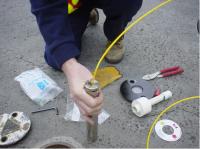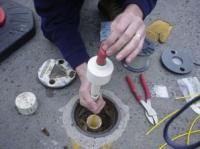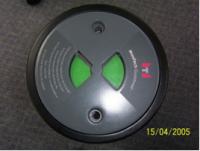Chemical fuse is term coined by Professor R S Bridges to describe a device that triggers in response to the presence of a chemical contaminant. It is directly analogous to a domestic electrical fuse which melts in the presence of too much electrical current in that it is of the very nature of the fuse material that it should fail, and having failed, it should be replaced once the source of the problem which caused it to fail has been removed.



Chemical fuses can provide alarms or set in motion a chain of actions. The current patented technologies can be tailored to applications but existing applications include:
- Placement in a dispenser pan to trigger in the presence of fuel – the speed of reaction of the fuse and the amount of fuel causing the reaction can be controlled.
- Placement in a ground monitoring well to trigger when a predetermined level of fuel has been reached on groundwater levels.
- Placement in a matrix under an above ground storage tank to trigger when there is a release – such and arrangement may also provide a location of the floor breach.
- Placement in a fill pipe to trigger if the fuel type is incorrect.
- Placement on a tank floor to trigger if a contaminant is present.
- Placement under a pipeline to trigger if a release occurs – such an arrangement can be designed to help locate the problem.
Chemical fuses do not require testing or maintenance since they obey the laws of chemistry, though they may need periodic replacement. It is a feature of the device that they are low cost and can be fitted in places where electrical systems may not be permitted.









